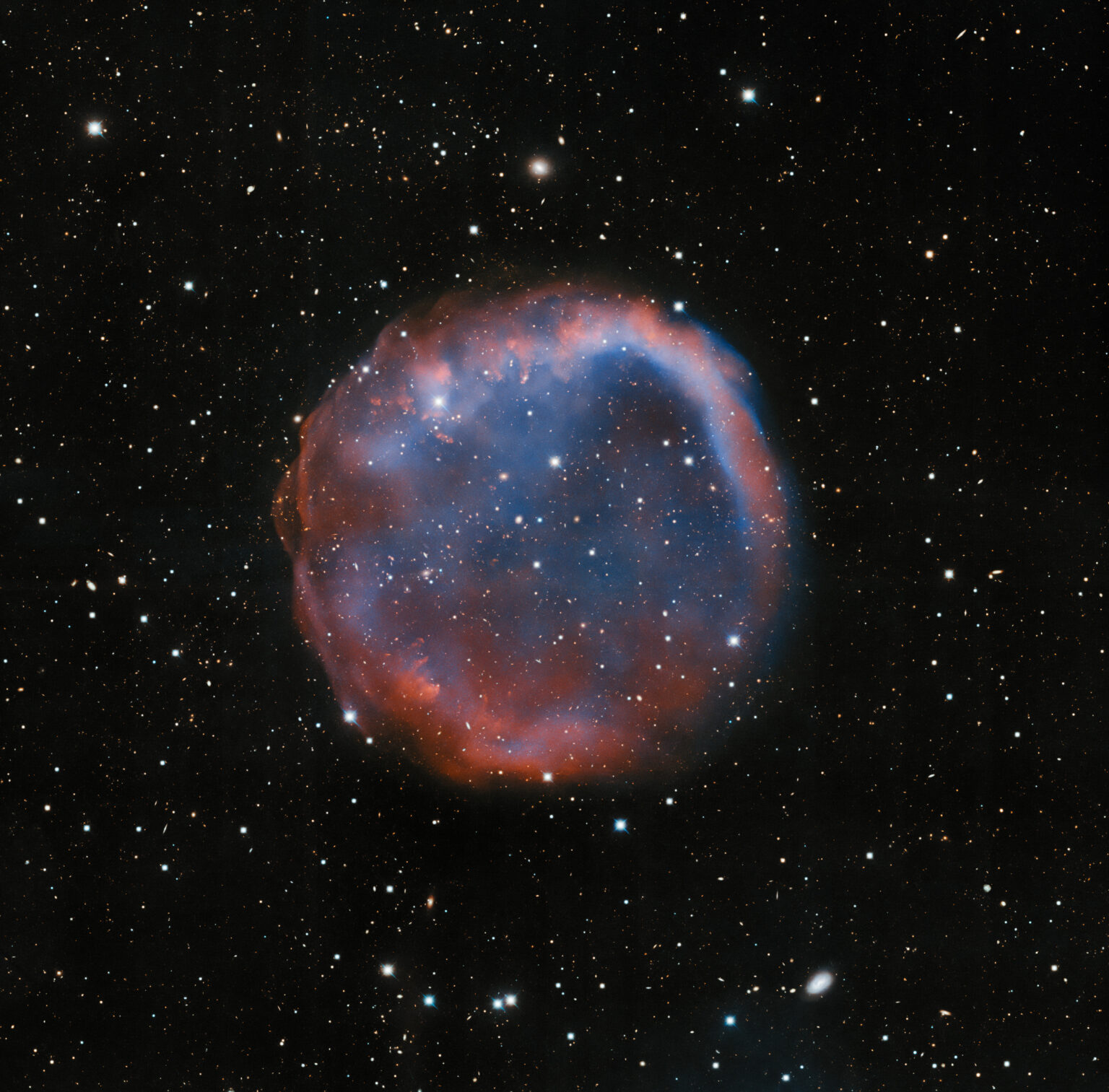The presented image was obtained by a 4-meter Nicholas Mayall telescope installed on the territory of the Kitt Peak Observatory. The image shows an object resembling a giant soap bubble. This is the planetary nebula EGB 6, located about 1,500 light years away from us.

The name “planetary nebula” can be misleading, since such objects have nothing to do with planets. In fact, they are something like a shroud that envelops a dying star.
Planetary nebulae are formed at the end of the life cycle of sun-like luminaries that have reached the red giant stage and dropped their shell into the surrounding space. The ultraviolet radiation of the exposed stellar core ionizes the ejected matter, causing it to glow and generating very colorful pictures.
The phase of the planetary nebula lasts several tens of thousands of years, which by astronomical standards is literally an instant. Especially if we compare this period with the lifetime of sun-like stars, which, depending on their mass, ranges from 30 million to 10 billion years.
EGB 6 will last for several thousand more years. After that, the stellar core will cool down and turn into a dim white dwarf, which will no longer emit enough ultraviolet light to ionize the discarded shell. As a result, it will become invisible. However, over time, the matter of the dead star will become part of the gas-dust clouds. Subsequently, they will give rise to a new generation of luminaries and planets where some kind of life may appear.
According to https://noirlab.edu
Follow us on Twitter to get the most interesting space news in time
https://twitter.com/ust_magazine

